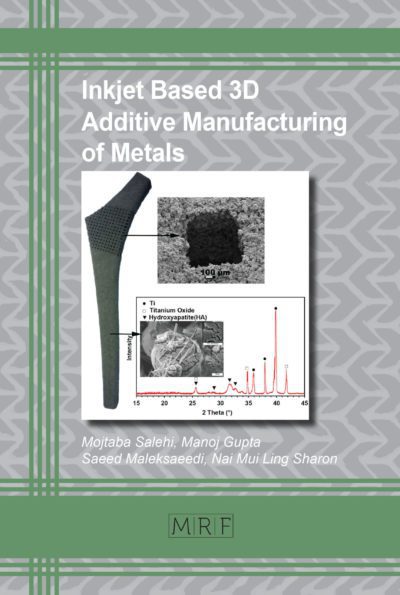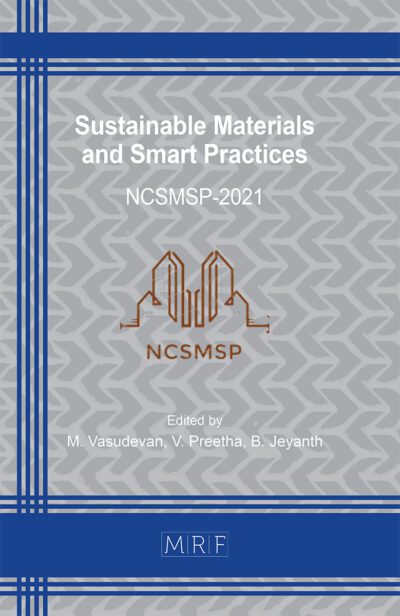Influence of surface quality on performance of forging dies produced by additive manufacturing: The role of post-processing in LPBF-manufactured X55 steel
Alexander Sviridov, Artem Alimov, Felix Jensch, Sergej Dubinin, Sebastian Härtel
Abstract. Laser Powder Bed Fusion (LPBF) has become a key technology in additive manufacturing (AM), enabling the production of highly complex geometries and is increasingly applied in serial production. With the continuous expansion of processable materials, LPBF is now also being considered for the manufacturing of forging dies. However, LPBF application for tool steels such as H11 is limited by their susceptibility to hot cracking. Maraging steels like X55 present a promising alternative due to their superior resistance to such defects. A major advantage of this technology for forging dies lies in the potential elimination of extensive machining required to refine rough as-built surfaces, thereby streamlining and accelerating the production process. Achieving this goal requires systematic investigations into non-machining post-processing techniques for targeted surface modifications, along with a comprehensive evaluation of mechanical properties and surface integrity after post-processing. This study examines the influence of different post-processing methods on the surface quality, mechanical properties, and tribological behavior of LPBF-manufactured X55 (1.2709) specimens. To evaluate surface roughness and mechanical performance, slope specimens and tensile specimens were analyzed in different conditions: as-built, mechanically machined, sandblasted, and treated via Hirtisition®. Additionally, flat dies were produced and subjected to ring compression tests to determine friction factors under varying surface and lubrication conditions. The findings emphasize the crucial role of post-processing in optimizing the surface quality and functional performance of LPBF-manufactured forging tools, offering valuable insights for their further development.
Keywords
Additive Manufacturing, L-PBF, Forging Dies, Hot Bulk Forging, Friction, X55
Published online 5/7/2025, 9 pages
Copyright © 2025 by the author(s)
Published under license by Materials Research Forum LLC., Millersville PA, USA
Citation: Alexander Sviridov, Artem Alimov, Felix Jensch, Sergej Dubinin, Sebastian Härtel, Influence of surface quality on performance of forging dies produced by additive manufacturing: The role of post-processing in LPBF-manufactured X55 steel, Materials Research Proceedings, Vol. 54, pp 245-253, 2025
DOI: https://doi.org/10.21741/9781644903599-27
The article was published as article 27 of the book Material Forming
![]() Content from this work may be used under the terms of the Creative Commons Attribution 3.0 license. Any further distribution of this work must maintain attribution to the author(s) and the title of the work, journal citation and DOI.
Content from this work may be used under the terms of the Creative Commons Attribution 3.0 license. Any further distribution of this work must maintain attribution to the author(s) and the title of the work, journal citation and DOI.
References
[1] B. Whip, L. Sheridan, J. Gockel, The effect of primary processing parameters on surface roughness in laser powder bed additive manufacturing, Int. J. Adv. Manuf. Technol. 103 (2019) 4411-4422. https://doi.org/10.1007/s00170-019-03716-z
[2] E. Maleki, S. Bagherifard, M. Bandini, M. Guagliano, Surface post-treatments for metal additive manufacturing: Progress, challenges, and opportunities, Addit. Manuf. 37 (2021) 101619. https://doi.org/10.1016/j.addma.2020.101619.
[3] D. Chantzis, X. Liu, D.J. Politis, O. El Fakir, T.Y. Chua, Z. Shi, L. Wang, Review on additive manufacturing of tooling for hot stamping, Int. J. Adv. Manuf. Technol. 109 (2020) 87-107. https://doi.org/10.1007/s00170-020-05622-1
[4] K. Chadha, Y. Tian, K. Nyamuchiwa, J. Spray, C. Aranas Jr., Austenite transformation during deformation of additively manufactured H13 tool steel, Mater. Today Commun. 33 (2022) 104332. https://doi.org/10.1016/j.mtcomm.2022.104332
[5] J. Samei, H. Asgari, C. Pelligra, M. Sanjari, S. Salavati, A. Shahriari, M. Amirmaleki, M. Jahanbakht, A. Hadadzadeh, B.S. Amirkhiz, M. Mohammadi, A hybrid additively manufactured martensitic-maraging stainless steel with superior strength and corrosion resistance for plastic injection molding dies, Addit. Manuf. 45 (2021) 102068. https://doi.org/10.1016/j.addma.2021.102068
[6] R. V., S. Kumar T., Influence of in-situ process parameters, post heat treatment effects on microstructure and defects of additively manufactured maraging steel by laser powder bed fusion—A comprehensive review, Phys. Scr. 99 (2024) 052001. https://doi.org/10.1088/1402-4896/ad3681
[7] K. Bae, H.-S. Moon, Y. Park, I. Jo, J. Lee, Influence of tempering temperature and time on microstructure and mechanical properties of additively manufactured H13 tool steel, Mater. 15 (2022) 8329. https://doi.org/10.3390/ma15238329
[8] DIN EN ISO 6892-1:2020-06 Metallische Werkstoffe – Zugversuch – Teil 1: Prüfverfahren bei Raumtemperatur (ISO 6892-1:2019); Deutsche Fassung EN ISO 6892-1:2019
[9] DIN EN ISO 6892-2:2018-09 Metallische Werkstoffe – Zugversuch – Teil 2: Prüfverfahren bei erhöhter Temperatur (ISO 6892-2:2018); Deutsche Fassung EN ISO 6892-2:2018
[10] DIN EN 2497:1989-11 Luft- und Raumfahrt – Trockenstrahlen von Titan und Titanlegierungen; Deutsche Fassung EN 2497:1989.














